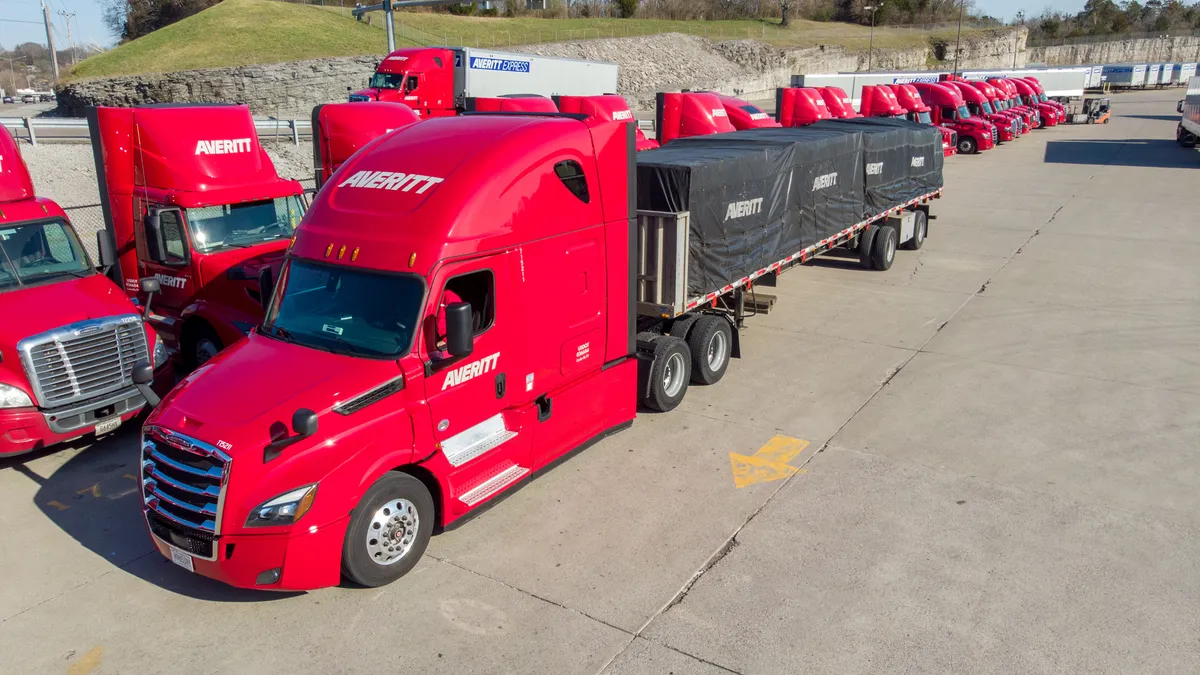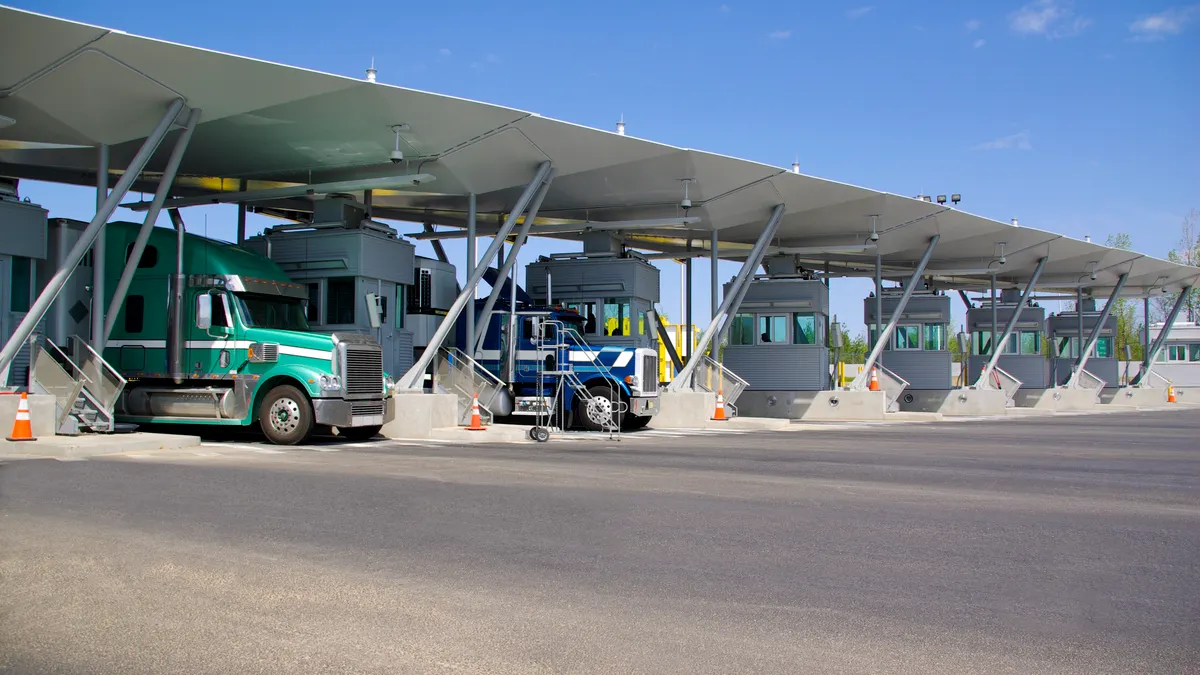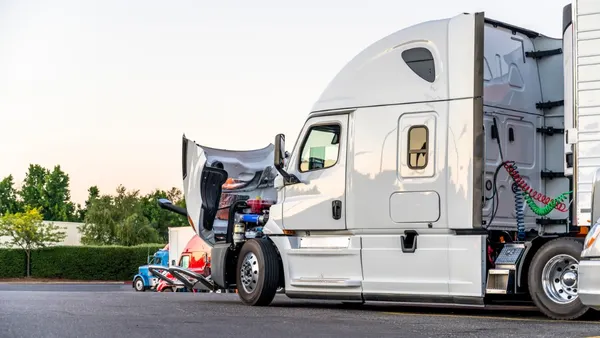Like the holidays, or summer vacations, demand for flatbed carriers is generally a seasonal matter, tending to have its strongest months in spring and summer. This year, however, all bets are off.
Flatbeds are a hot-ticket item. Chalk it up to a convergence of factors.
"Flatbed carriers are capable of hauling a wide range of loads, from raw materials like steel, to manufactured goods like pipe and lumber, to heavy machinery and even produce," said Dean Croke, principal analyst at DAT. "As the weather warms up, the number of flatbed loads naturally increases as construction, agriculture and other activities that use flatbed trailers pick up."
Those rules don't apply right now, however. One reason for the increased demand is the booming housing market, said Croke.
"Demand for construction material is exceptionally high," he explained. "Single-family home permits were up 15% year over year in February, and permits typically lead housing starts by one or two months."
Then there's the growth in the manufacturing sector, which has been on the rise for 10 months straight, according to the Institute for Supply Management's March report. This means more demand for items flatbeds are uniquely suited to carry, like metal, lumber and other raw materials.
Flatbed demand soars with housing boom
Mother Nature has also contributed to the flatbed demand, said Croke. "In March, we still had the lingering effects of a polar vortex in February," he said. "Any kind of weather disruption can put pressure on supply chains."
This month, spot flatbed truckload rates and load-to-truck ratios hit their highest points since mid-2018, according to DAT. In March, there were more than 83 flatbed loads on the DAT network for every available truck; for the week ended April 18, that ratio was just about 95.7.
While the uptick in business is welcome, meeting demands can be challenging for flatbed carriers. Whether facing the driver shortage or otherwise struggling to expand capacity, this boom period can bring difficulties.
Unique driver talent
Recruiting drivers, in particular, can be tough when dealing with flatbed equipment. This rings true for Averitt Express, said Danny Crooks, vice president of corporate transportation.
"Driving a flatbed is unique because of its physical demands," he explained. "They have to spend time and energy securing loads, and not all drivers want to do that if there's another option."
Bennett Truck Transport, headquartered in Georgia, runs more than 1,500 flatbed trucks across a variety of commodity verticals. The firm has experienced similar headwinds.
"[Flatbed drivers] have to spend time and energy securing loads, and not all drivers want to do that if there's another option."

Danny Crooks
Vice President of Corporate Transportation at Averitt Express
"We're definitely seeing an uptick in demand for this service," said Larry Barnes, executive vice president. "Recruiting drivers to flatbed is more challenging relative to general van drivers."
In the midst of these challenges, Barnes said his company is still calculated and measured in its recruiting methods.
"We want to maintain our standards even with high growth," he said. "We talk to our customers about planning and forecasting to help keep up with demand."
Still, many flatbed carriers offer sign-on bonuses and weekly minimum pay, in addition to cash incentives for specific flatbed drivers' training.
"We've tried many things, but finding flatbed drivers is always hard," said Crooks. "But we have a concentrated footprint, and our customers are pretty static, and that predictability is appealing to drivers."
Leaning on owner-operators
As for finding equipment to keep up with the flatbed demand, neither Crooks nor Barnes expressed concern.
"We haven't had a problem," said Crooks. "But we haven't grown our flatbed fleet, either, partially due to the lack of drivers for this segment. But I would assume inventory might be low."
Part of the need for flatbed equipment is offset by the number of owner-operators in this segment, which has a long history in this space. Croke said the flatbed market is reliant on independent truckers who have experience and equipment.
There are approximately 350,000 to 400,000 owner-operators, according to the Owner-Operator Independent Drivers Association, and the majority of them choose flatbed or reefer trailers. While that might seem like it would result in not enough owner-operators to keep up right now, Croke said that's not the case.
"Overall, we aren't going to run out of trucks to move freight."

Dean Croke
Principal Analyst at DAT
"Overall, we aren't going to run out of trucks to move freight," he said in an email. "However, when flatbed equipment is in high demand, as it is now, the carrier is in a stronger position to negotiate the rate."
There's also the fact that flatbed demand dipped in early- to mid-2020, helping to temper any supply issues that might exist. Looking forward, all the market indicators for flatbed demand remain strong. Construction, the energy sector and infrastructure investment all show little sign of slowing down.
"Normally flatbed demand is just ramping up this time of year," said Croke. "But right now, the demand is already there."










